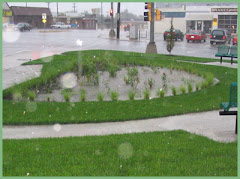
Hi everyone. After instructor comment on my planning outline, I decided to narrow my focus from general stormwater retention on-site to the retention and recycling of stormwater. The scope of retention on-site is very broad in respect to numerous ways this can be acheived. Recycled stormwater is one of the measures used and actually provides self-sustainability to a building by which it can reuse water that falls on its site and use it for non-potable situations such as toilets, dishwashers, washing machines, or irrigation. The recent seminar at Stantec, during the Vancouver field trip, talked about recycled rainwater systems as being a major design component for buildings today. Green standards have been integrated into consultant offices all over Canada, and recycling rain has become very important to communities with water shortages.
This video shows the Construction of a Cistern.
RAIN BARREL BY AQUABARREL



1 comment:
Derek,
The Blog is looking wicked, Keep up the good work. I was just looking into your subject a little bit and found some things you dont have on your references that you might be interested in. Also they have a bunch of drawings that are always fun, hope it helps,
Travis
http://www.austinenergy.com/Energy%20Efficiency/Programs/Green%20Building/Sourcebook/stormwater.htm
http://www.melbournewater.com.au/content/library/wsud/conferences/melb_1999/stormwater_reuse_-_a_balanced_assessment.pdf
Post a Comment